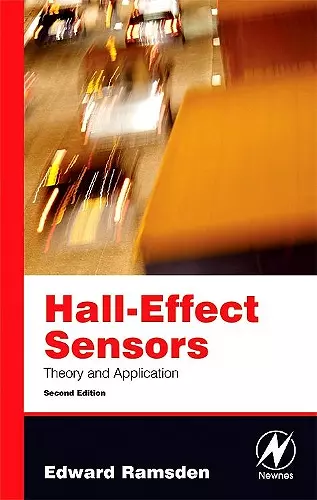Hall-Effect Sensors
Theory and Application
Format:Hardback
Publisher:Elsevier Science & Technology
Published:23rd Mar '06
Currently unavailable, and unfortunately no date known when it will be back

Every engineer needs to know about Hall effect sensors- one of the most common sensors on the market.
Without sensors most electronic applications would not exist-sensors perform a vital function, namely providing an interface to the real world. Hall effect sensors, based on a magnetic phenomena, are one of the most commonly used sensing technologies today. This book covers the physics behind Hall effect sensors.Without sensors most electronic applications would not exist—sensors perform a vital function, namely providing an interface to the real world. Hall effect sensors, based on a magnetic phenomena, are one of the most commonly used sensing technologies today. In the 1970s it became possible to build Hall effect sensors on integrated circuits with onboard signal processing circuitry, vastly reducing the cost and enabling widespread practical use. One of the first major applications was in computer keyboards, replacing mechanical contacts. Hundreds of millions of these devices are now manufactured each year for use in a great variety of applications, including automobiles, computers, industrial control systems, cell phones, and many others. The importance of these sensors, however, contrasts with the limited information available. Many recent advances in miniaturization, smart sensor configurations, and networkable sensor technology have led to design changes and a need for reliable information. Most of the technical information on Hall effect sensors is supplied by sensor manufacturers and is slanted toward a particular product line. System design and control engineers need an independent, readable source of practical design information and technical details that is not product- or manufacturer-specific and that shows how Hall effect sensors work, how to interface to them, and how to apply them in a variety of uses. This book covers:• the physics behind Hall effect sensors• Hall effect transducers• transducer interfacing• integrated Hall effect sensors and how to interface to them• sensing techniques using Hall effect sensors• application-specific sensor ICs• relevant development and design toolsThis second edition is expanded and updated to reflect the latest advances in Hall effect devices and applications! Information about various sensor technologies is scarce, scattered and hard to locate. Most of it is either too theoretical for working engineers, or is manufacturer literature that can’t be entirely trusted. Engineers and engineering managers need a comprehensive, up-to-date, and accurate reference to use when scoping out their designs incorporating Hall effect sensors.
ISBN: 9780750679343
Dimensions: unknown
Weight: 660g
272 pages
2nd edition